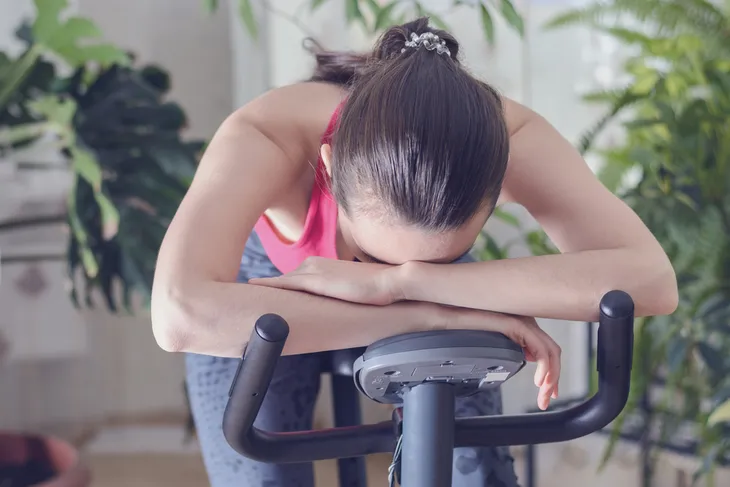Everyone has the best intentions in mind when they decide to start exercising more regularly. You might take up running or walking every morning, or you might decide to join a gym to lift weights or try a few fitness classes on for size.
Either way, an injury is the last thing on your mind when you decide to take the fitness plunge. However, a muscle strain or injury can crop up if your lifting technique is sloppy or if you tend to push your body a little too hard. Here are seven ways exercise can lead to injury…
No Pain, No Gain Attitude
Sure, you are bound to experience stiff muscles after a workout, especially if you are new to exercise or haven’t exerted yourself in a long time. New York-based orthopedic and sports physical therapist, Dr. William Siegel, warns that pushing yourself during a workout doesn’t mean you should push through physical pain.
If you feel pain, your body is warning you to take a break or stop what you’re doing. For instance, fatigued muscles are one thing, but shooting pain and discomfort in your knee or lower back should be taken as a warning to cease the activity.
You Lift Too Heavy
Everyone wants to get the most from the time they spend in the gym. However, more isn’t always better when it applies to how much weight you’re pumping. According to an article from MuscleMagFitness.com, lifting too heavy weight can quickly lead to improper form and injury.
Instead, choose an appropriate weight that you can properly control while maintaining proper form for a full set of reps. Once that gets too easy, add more weight gradually.
You Don’t Take Your Time
The experts at WebMD suggest easing into any new workout rather than jumping in and risking a muscle strain. After all, taking your new exercise routine slow and easy will offer enough of a challenge.
Then, as you gradually build up muscle strength and stamina, you can gradually increase the intensity, frequency, and duration of the exercise—while taking adequate rest for muscle repair in between exercises.
Too Much Repetition
I once had a roommate who did 100 pull-ups every morning. You can probably guess that he ended up pulling a muscle about a month into it, and was probably never able to do a pull up ever again as a result. Repetitive stress is the inevitable outcome when your workout has no variation.
My roommate tore his latissimus dorsi (large muscles that wrap around the side and back) because he simply overworked these muscles. Instead, he should have allowed for adequate rest and shaken up his routine with exercises that focused on the full body.
You Can’t Tell Sore From Injured
Stiff muscles and mild tenderness is common 24- to 72-hours following a workout, especially if you’re new or back to exercise following a long break. However, your body knows the difference between a pair of stiff calf muscles and an ankle sprain.
Muscle fibers are naturally torn during exercise. Rest gives them adequate time for those same muscle fibers to repair, as well as gain strength and endurance. However, pain—due to a muscle or joint strain or sprain—will cause sharp, shooting, persistent pain that doesn’t dissipate with rest. If pain persists, cease your workouts and get yourself to a medical professional immediately.
You Push Too Hard
Sure, exercise progression requires pushing yourself outside of your comfort zone. However, as you do this it’s vital to know your body and recognize your limits. If you tend to push yourself beyond your limits too often, exercise not only becomes addictive—you can end up injured.
Research conducted by the Department of Clinical and Biological Sciences at San Luigi Hospital, in Turin, Italy, claims that overtraining occurs when “exercise exceeds the body’s ability to recover” so instead of the body gaining strength and endurance, it develops weakness and becomes slower due to an injury.
Poor Technique
I don’t have to tell you that proper exercise form is vital for preventing an injury. However, I’ll let the Mayo Clinic remind you that if you use poor technique when you lift weights, you could quickly develop an overuse injury.
Repetitive use injuries occur when improper lifting technique puts excess pressure on your muscles and joints. The repeated stress will wear away at the area gradually until a strain, sprain, fracture, or dislocation results.










